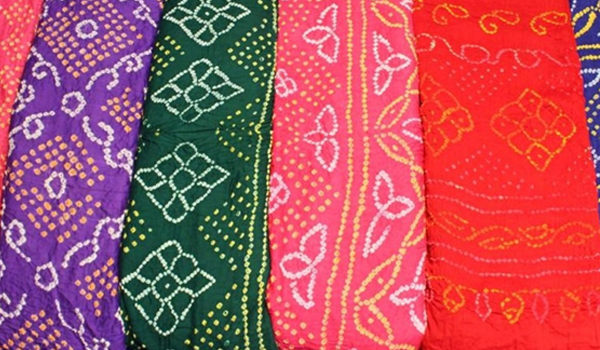
Bandhani (State: Gujarat & Rajasthan)
This ancient technique or widely called as Tie & Dye began around 5000 years ago in Rajasthan & Gujarat. The word comes from ‘Bandhan’ which means tying up, whereby hand portions of fabric is tied up for producing different patterns. The area along the ties remain undyed and countless number of patterns can be created. It is known for its vibrant shades.
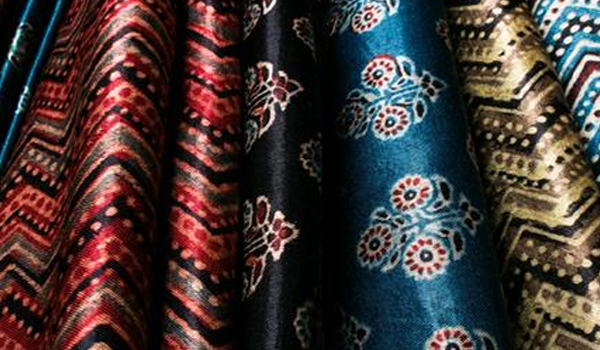
Mashru Weave (State: Gujarat & Rajasthan)
The word means ‘Permitted’ in Arabic, while the Sanskrit translation, ‘Misru’ means ‘Mixed’. Mashru fabric hails from West Asia where the Muslim community popularised the fabric because of its utility factor. Mashru is a woven cloth that is a blend of silk and cotton. It is known for its fine satin texture, vibrant contrasting stripes and Ikat weave. It is mainly manufactured in Mandvi and Patan area of Gujarat.
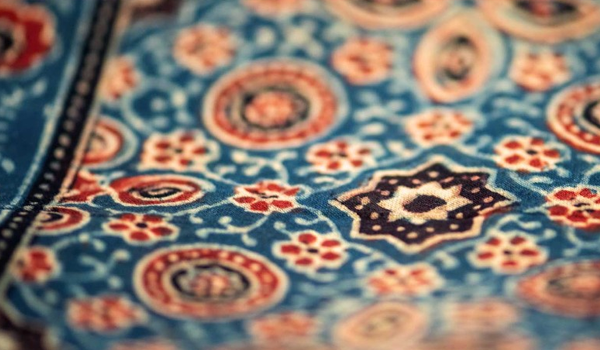
Ajrakh (State: Rajasthan)
It is a block printed textile that is resist dyed using natural dyes. It is made by the Khatris community in Kutch, Gujarat and it is distinguished by its colour – Blue with Red and its complex geometric & floral patterns. It takes skill and patience to make an Ajrakh garment.
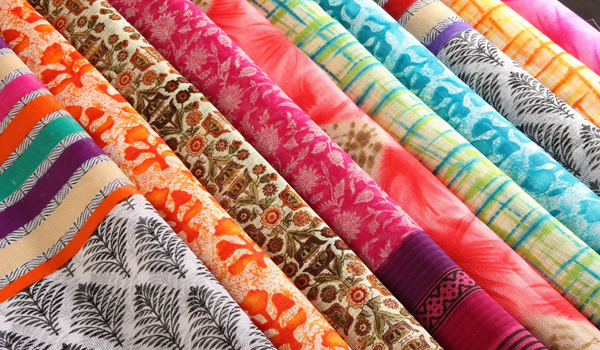
Kota Doria (State: Rajasthan)
It was originated in Mysore around the 17th-18th century period. This is a light weight fabric made of tiny woven squares (known as khat) which is still handwoven on traditional looms in Kota, Rajasthan. Kota fabric is a fine weaving craft and transparent.
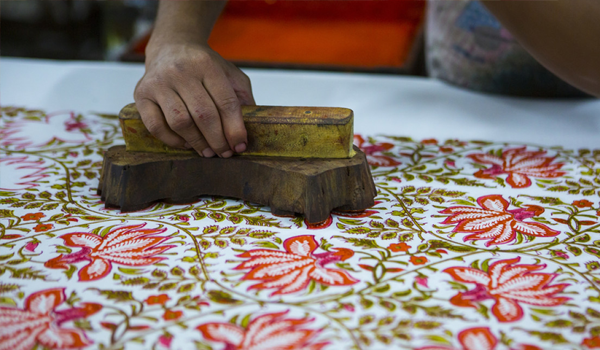
Block Print (State: Rajasthan)
Indigo is the oldest natural dye used in India since ancient time, to produce natural Blue colour on fabric. Indigo is obtained from leaves of Indigofera plant. Then it undergoes multiple level of processing to obtain the desired dye. Now, it is an integral part of everyone’s wardrobe.

Phulkari (State: Punjab)
‘Phul’ means flower and ‘Kari’ means work. It literally means working with flowers, a folk embroidery of Punjab, using floral themes. Long and short darn stitches have been put to clever use in creating horizontal, vertical and diagonal thread work. The narrower the stitch, the finer will be the art.

Organza (State: Punjab)
Like most silk fabric, silk organza fabric originated in China, where silk was first cultivated. Organza was traded along the Silk Road, the trading route from China to Europe, and production spread around the world. Organza is a lightweight, sheer, plain-woven fabric that was originally made from silk. Organza is also characterized by very small holes throughout the fabric, which are the spaces between the thread in the plain-weave pattern.
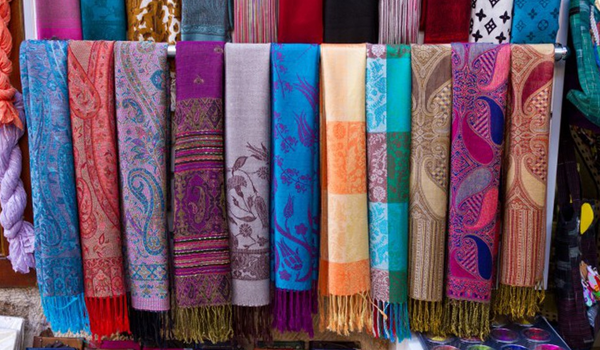
Pashmina (State: Kashmir)
CASHMERE is the name derived from the old spelling of Kashmir ‘Cashmeer’ and Pashmina means “gold wool” in Persian, the name given to the wool fabric produced in Kashmir. The weaving process is an art originating from the 15th century and hasn’t changed much since. It takes about three to four days to weave a single Pashmina stole or shawl. Pashmina is considered the finest craftsmanship in the world for winters. The fleece of Changthangi Goat is known as Pashm. These goats are only found 15,000 feet above sea level in Jammu and Kashmir. This makes the art of Pashmina even rarer. Pashmina was discovered under the Mughal rule in Kashmir during the 16th century.
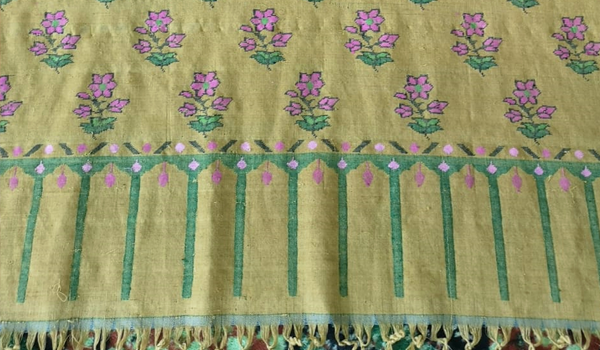
Kani weave (State: Kashmir)
A Kani shawl is a type of Kashmir shawl originating from the Kanihama area of the Kashmir valley. It is one of the oldest handicraft of Kashmir. This craft has been a part of the valley since the time of Mughals. The shawls are woven from pashmina yarn on a handloom. But instead of a shuttle used in regular pashmina shawls, Kani shawls use needles made from cane or wood. The distinguishable, Mughal patterns, usually of flowers and leaves, are woven into the fabric like a carpet.
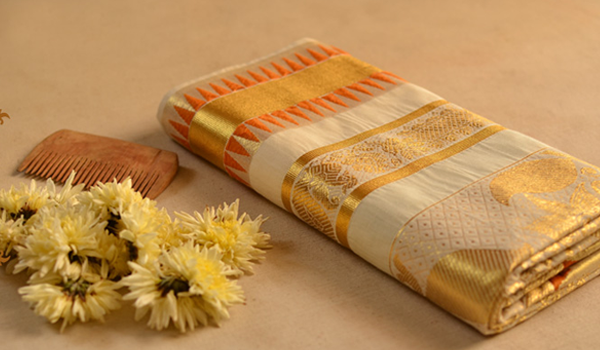
Kerala Kasavu (State: Kerala)
The term Kasavu refers to the ‘zari’ (gold thread) used in the borders of Kerala Dupattas and Sarees. It is mainly produced by the handloom weaving clusters in villages. It symbolizes the tradition and culture of the state. The white and gold dupattas are unique due to their natural hues, texture and the gold border which adds to their elegance. No occasion in Kerala feels complete without the Kasavu apparel.
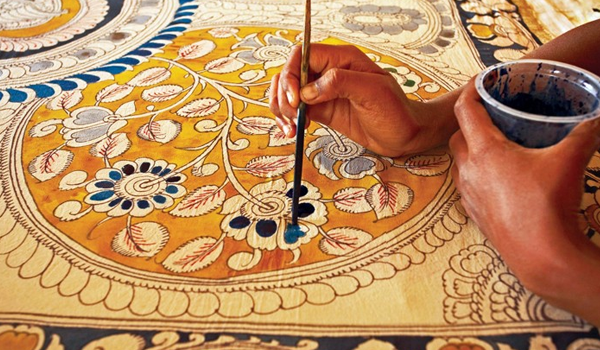
Kalamkari (State: Andhra Pradesh)
Kalamkari originated in the modern-day states of Andhra Pradesh and Telangana several hundred years ago. It was first used to portray scenes from sacred texts such as the Mahabharata, Ramayana and Bhagavatam. Deriving its name from the word ‘kalam,’ which means pen, ‘Kalamkari’ refers to a particular, intricate style of hand-painting onto cloth. Like many traditional Indian crafts, Kalamkari uses only natural materials. These raw materials include cotton cloth, dried unripe fruit and milk to make the ‘mordant,’ charcoal sticks, black kasimi liquid, alum solution and natural pigments in red, indigo and yellow. This art is unique in its ability to connect us to our humanity and our history.
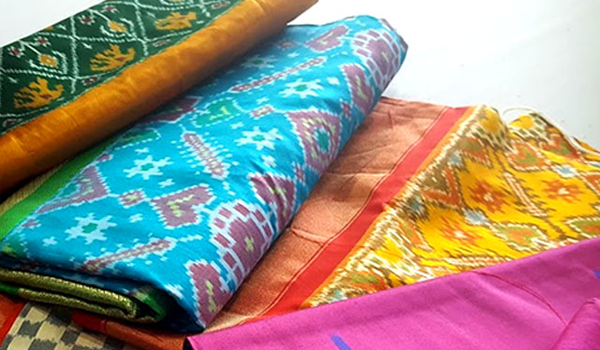
Pochampally Ikat (State: Telengana)
It is a dyeing technique originated from Indonesia, which imparts resist dyeing on the yarns prior to dyeing and weaving the fabric. It can be done on any textile fibre that takes well to dye.
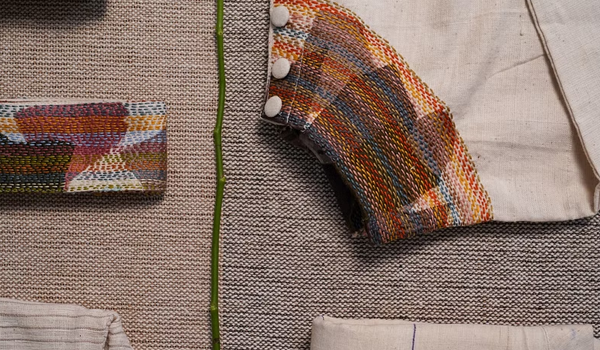
Linen (State: Bihar)
It is a sustainable fabric made from flax plant. Eco friendly linen is known for its high breathability. It is an extremely strong, lightweight fabric best for summer season. It will soften as you wear it over time. It is one of the world’s oldest fabrics.

Kantha Embroidery (State: West Bengal)
Kantha originated from Bengal, by rural women. The Sanskrit word Kantha means ‘rags’. It is a form of patched, quilted and vividly embroidered textile made entirely out of used cloth. The entire cloth is covered with running stitches, the stitching on the cloth gives it a slight wrinkled wavy effect.


 Login
Login